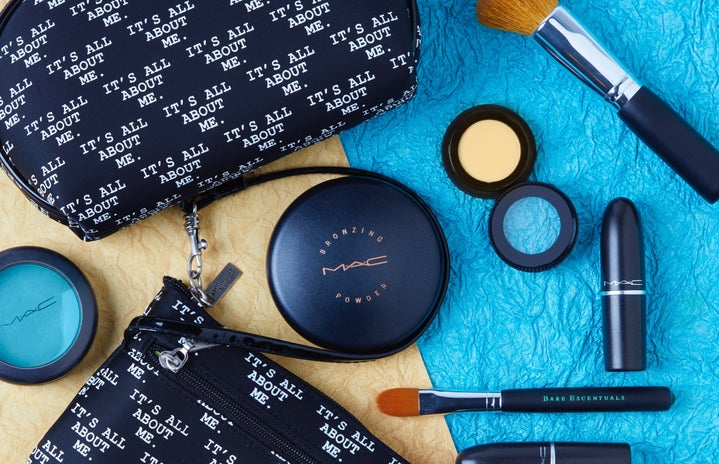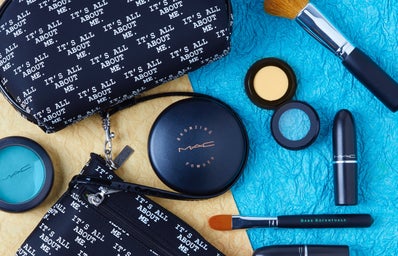Making your own face masks and lotions is all fun and games until BAM! You’ve got three huge zits in the middle of your forehead, and you don’t know where you went wrong. You’re DIY skin treatment was supposed to clear your acne, not cause more.
Trust me, I am all for making your own skincare products. It saves money, it’s more natural, and it can be a whole lot of fun. I’ve been experimenting with DIY skincare since I was eight years old, so I’ve seen it all, and now I’m going to pass what I’ve learned on to you so you don’t make the same mistakes.
The biggest mistake DIY beauty enthusiast make when creating their own products is choosing the wrong ingredients. Yes, I am at fault for this, but I’ve learned a few tricks and tips that everyone can incorporate when it comes to choosing your skincare, whether you are making it or buying it.
The first thing you want to do before even buying your supplies is do your research on the ingredient you want to use to check if they are noncomedogenic. This means that it won’t clog your pores. Every substance you put on your face or body has a number from 0 to 5 on the comedogenic scale, 0 being noncomedogenic and 5 being VERY comedogenic. As a rule of thumb, you should only put something on your face with a comedogenic rating of 2 or lower. This rating basically measures the size of the molecules in a certain substance; if it is close to the same size of your pores, it will most likely get stuck and clog them, deeming the ingredient a high number on the comedogenic scale. Substances rated at a 2 or less are most likely too small to get stuck in the pore or too large to enter the pore.
Now that you’ve received the crash course on comedogenicity, here’s how you can determine if your ingredients are noncomedogenic.
1. Use a guide
I use this website as a general guide for most ingredients. It’s a database with tons of substances found in skincare and makeup, and they are listed in alphabetical order, so you can easily scroll to the substance you want to use, or you can go through and look over the whole guide to give yourself a basic knowledge of which ingredients are safe and which to stay far, far away from.
Say I wanted to use coconut oil in a face mask. I scroll down to the C’s.
Yes ladies (and humans of all kinds), your beloved coconut oil is a whopping 5 on the comedogenic scale!!! That means it is most likely clogging your pores over time and causing you to break out in the long term, even if the effect don’t show overnight. So reserve your coconut oil for below the chin, on the hair, and in the kitchen and opt for a safer oil like shea butter when it comes to your face.
2. Look up a specific product
If you can’t find the ingredient you want to use on the guide (which may be the case with many natural substances), look it up online and double check with multiple sources in case there are inconsistencies.
Again, make sure the substance has a rating of 2 or less. If it doesn’t, look up some alternatives and check their ratings too to be safe.
3. Analyze a product with CosDNA
This is a super convenient tool you can use with the products you are making or the ones you are buying. One you open the link, click Analyze Cosmetics and you can manually input the ingredients you are using, click Analysis, and it will show you the comedogenic rating for acne, a rating for irritation, and a rating for overall safety.
I like to stick with numbers between 0-2. For more sensitive or ance-prone skin, the lowest rating is the best.
Here I input the ingredients I use in my DIY moisturizer. As you can see, the comedogenic rating (under Acne) for some substances won’t always appear, which is why you have other tools to look them up. This search does, however, tell me that all my ingredients are safe for long term use and probably won’t clog my pores.
If you want to check out the ingredients of a store-bought product (which I highly recommend because you won’t even understand most of the ingredients on the label), then look up what ingredients are in the product and copy and paste them into the product analyzer to check them out. The ingredients on the top half of the list are the most important since they make up most of the product, but you still might want to consider the rating of the latter ingredients depending on how sensitive your skin is. You can’t really rely on skincare products that are labeled noncomedogenic in stores, so use this tool ladies!!!
With these three steps, you should be good to start DIYing in your at-home chemistry lab (aka… kitchen), but for reference, I’ve listed some of my favorite safe, noncomedogenic ingredients below:
- Shea butter
- Almond oil
- Glycerin
- Honey
- Bentonite clay
- Kaolin clay
- Lavender essential oil*
- Tangerine essential oil*
- Frankincense essential oil (gentler than tea tree)*
- Tea tree oil (used VERY carefully in small amount) *
- Rose water
- Green tea
*all essential oils are very potent and should be used in moderation with a carrier oil or as a spot treatments
Remember that your skin is your skin for life. Treat it well and pay attention to the things you put on it. Acne is natural and it happens to everyone. The best we can do is try not to exacerbate it with the products we put on our skin, and let it heal without stripping your skin of its essential nutrients.


